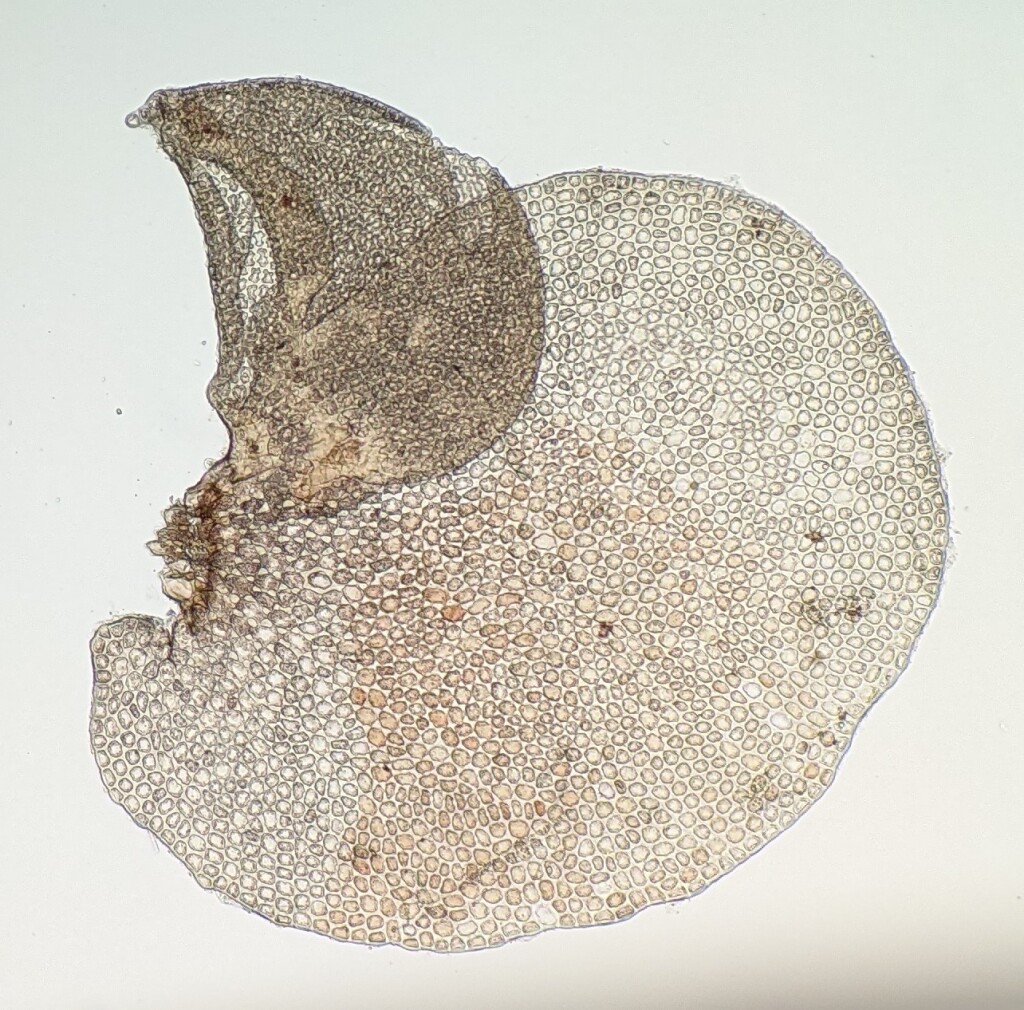Frullania clavata
(Hook.f. & Taylor) GottscheEpiphytic, grey-green, pale green or olive green becoming lime green towards stem apices. Stems pinnately branched. Mid stem and branch lateral leaves obovate-orbicular, 1.15–1.63 mm long, 0.88–1.38 mm wide, rounded at apex, not angled away from substrate when moist, imbricate; cells quadrate to rounded-quadrate becoming elliptic to oblong toward base, 12–20 µm long and 10–20 µm wide at margin, 15–28 µm long and 15–25 µm wide near centre, 25–63 µm long and 18–40 µm wide at base, with prominent trigones away from margins, becoming confluent toward base, walls thin away from margin, evenly thickened at margin, with occasional intermediate thickenings away from margin, especially near basal centre. Lobule falcate with longest axis diverging from stem, 0.38–1.13 mm long, 0.3–0.75 mm wide, with acute apex, often terminating in a single row of cells; cells 15–30 (–40) µm long, 10–23 µm wide, with prominent trigones and similar sized intermediate thickenings throughout. Stylus c. 10 cells long, with multicellular disc in basal half and terminating in uniseriate apex. Underleaves orbicular in outline, bifid to 1/6–1/5 of length, otherwise entire or with a single blunt tooth on each side, 0.45–1.05 mm long, 0.45–1.2 mm wide, flat, with lobes usually angled towards each other like pincers; sinus rounded or obtuse; cells mostly irregularly shaped, circular or quadrate near margin, 12–33 µm long, 12–25 µm wide, longest at basal centre, smallest at margin, with prominent trigones and intermediate thickenings throughout. Perianth cylindric-clavate, 2.6–2.9 mm long, 1.1–1.3 mm wide, 3-keeled, dorsally flat to slightly inflated, truncate at apex with short beak, pedicellate at base, smooth; keels entire.
GipP, Gold, CVU, GGr, EGL, EGU, WPro, HSF, HNF, OtR, Strz, MonT, HFE, VAlp. Common in montane and wet forests, particularly in East Gippsland, the Strzelecki Range, the Yarra Ranges and the Otways, but also recorded from the Grampians and sporadically through the Victorian Alps. Also Qld, NSW and Tas.
The underleaves with pincer shaped lobes, combined with the relatively large size, the beak-shaped lobule that terminates in a fine point, the evenly thickened cell walls near the leaf lobe margin and the 3-keeled perianths without tubercles readily separates this common species from other Victorian Frullania species.
 Spinning
Spinning